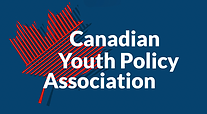Opinion: The Dangers of Lowering the Drinking Age
Dec 31, 2022
John Demianczuk
Why lowering the drinking age sends Canada sailing into a dangerous future.
The Minimum Legal Drinking Age (MLDA) is not a law of desuetude, but rather living legislation that reflects contemporary Canada and its needs in a technologically advancing society: so why change it? In recent years, increased attention across Canada is commencing the creation of a comprehensive MLDA in all provinces and territories - where 16 years of age would be designated. However, with a governmental expected deficit of over CAD 73,000,000,000, should increasing funds be directed towards this initiative? Ethically and socio-economically, no. Even disregarding the negative economic factors this initiative would effectuate, the Minimum Legal Drinking Age should not decrease out of consideration of the detrimental impact on brain development, mortality rates, and drunk driving among youth.
The correlation between Canada’s drinking-age laws and youth mortality is iron-clad. Researchers at the National Library of Medicine proved how a decrease in the drinking age opens the possibility of the contraction of 200+ diseases, ranging from liver diseases, road injuries, and violence to suicide, strokes and cancer. Furthermore, in 2014, four researchers investigated the predominant cause of death in youth aged 16-22 over a 29-year period. After comparing the number of deaths in those just older and just younger than
the MLDA, they found significant increases in mortality: 11.7% - 16.3% in motor vehicle crashes, and 10.4% - 18.2% in injuries. These studies illustrate the powerful impact of Canadian drinking legislation and policies on youth mortality. Neglecting preventable issues of young adults - given the removal of MLDA restrictions, can be estimated, as concluded by both studies, of upwards of 100+ deaths every year.
Frighteningly enough, lowering the MLDA will not only increase mortality and morbidity rates but will cause harm to the physical and mental development of adolescents. Young adults' frontal lobe - essential for emotional regulation, organization and planning, is interfered with by alcohol consumption. As a result, chronic problems can lead to addiction, depression, violence, memory loss, and a plethora of equally dangerous symptoms. Findings from the National Survey on Drug Use and Health also discovered “adults aged 21 or older who had first used alcohol at age 16 were more likely to be classified with alcohol dependence or misuse than adults who had their first drink at age 21 or older.”
Commonly discussed with the MLDA, is the law's effectiveness regarding alcohol-impairment driving - thousands of which occur each year. Looking at the United States, a meta-study reported higher drinking ages with lower rates of fatal and non-fatal accidents. The report states that “in the 30 years since MLDA 21 was introduced, drunk driving fatalities decreased by a third.” Similarly, The National Highway Traffic Safety Administration (NHTSA) estimates that MLDA 21 has saved 31,417 lives from 1975 to 2016 - revealing how essential the MLDA 21 is especially when compared to countries with lower MLDA.
One widely proposed solution is adolescents can be kept safe and learn to handle alcohol under adult supervision. This would be a compelling argument - if it were true. Despite good intentions, the Journal of Studies on Alcohol and Drugs found an association with “not only parent-sanctioned underage drinking and increased teen alcohol consumption, but also, increased heavy episodic drinking and higher rates of alcohol-related issues.”
Simply put, as O’Malley and Wagenaar (National Library of Medicine) concluded in 2011, a higher MLDA saves lives. The pros far outweigh the cons; it is an ethical law in an increasingly unethical society. As we progress through the 21st century, as societal pressure surrounding drinking increases, as a greater number of cars are placed on the roads, it is instrumental that the government recognizes the futility of decreasing the MLDA. Government funding should instead model countries with tremendous success with respect to teenage drinking. The Government of Canada should instead redirect funds to build partnerships with schools, health care and public health agencies to reduce excessive alcohol use, as has proven sucessful in the past.
